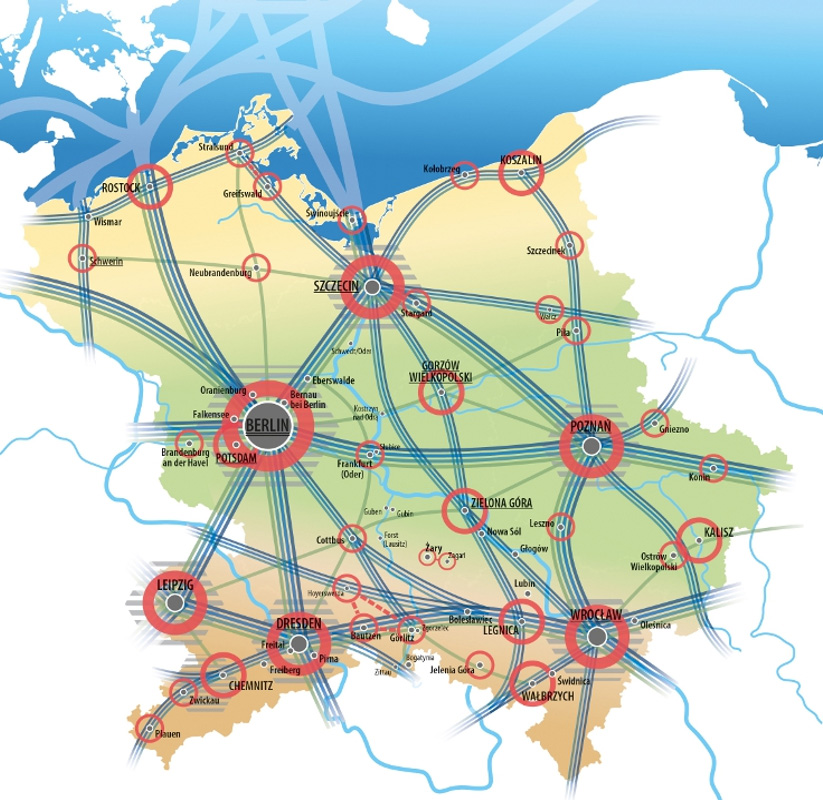Region-focused Territorial Impact Assessment
 Inequalities between places and people are prominent in development discourses around the European Union, with notions such as ‘places that don’t matter’ or ‘places left behind’ or ‘the geography of discontent’.
Inequalities between places and people are prominent in development discourses around the European Union, with notions such as ‘places that don’t matter’ or ‘places left behind’ or ‘the geography of discontent’.
The ‘Region-focused Territorial Impact Assessment (TIA)’ pilot action aims to better understand how different sectoral policies can shape spatial imbalances, focusing in particular on areas left behind and bringing the local levels to the forefront.
By developing a better understanding of policy impacts on territories, better policies can be designed in future which are place sensitive and address more effectively the needs of communities and citizens.
Rationale & link to Territorial Agenda
The Territorial Agenda 2030 addresses inequalities between places and people and advocates for a future for all places. The action aims to create a better understanding policy impacts on territories to design better policies that are place-sensitive and address the needs of communities and citizens. Instead of implementing different TIAs across different territories and eventually comparing their outcomes, the rationale builds on existing TIA methodologies and aims to develop and test the right blend of those that best serve the purpose of the pilot action. The pilot action builds on three innovative ideas. First, the focus of the TIA starts from the characteristics and needs of the territory and agreed development goals. Different types of territories can be included, e.g. urban, rural, cross-border areas to look at effects beyond borders. Second, the TIA aims to support integrated territorial development strategies at different levels of governance. Lastly, it aims to involve local and regional players in implementation.
Activities
The process of the ‘Region-focused Territorial Impact Assessment’ had three main phases:
- Phase 1: Collecting showcase examples and introducing them to the participating stakeholders (incl. review of existing TIA methodologies and the impact policies on the indicated areas and types of territories) plus the pilot projects (PL-DE, SI, CZ, et al.). A report summarising the existing TIA methodology and the extent to which it is used in EU Member States was produced. In order to understand more fully the approaches presented, several individual in-depth interviews were conducted with their authors and/or key TIA researchers in Europe.
- Phase 2: Developing a flexible methodology for a tailor-made TIA: SPA(TIA), building on the results of phase 1.
- Phase 3: Implementing/ testing the SPA(TIA) methodology.
The pilot action combined joint and individual activities of the partners involved in the case study areas, including input on experiences, workshops, and verification of methods to the involvement of joint coordination experts.
Lessons learned
Assessing the territorial impact of policies is a complex challenge due to diverse needs and contexts. This diversity makes it impossible to develop a universal Territorial Impact Assessment (TIA) method. The results of the pilot action highlight key factors influencing TIA: the time horizon of the analysis, the complexity and scale of policy impacts, data availability, and stakeholder characteristics. Awareness of this diversity, combined with knowledge of available TIA methods, enables the selection of the most appropriate approach on a case-by-case basis.
A comprehensive review of existing TIA methodologies, practical experiences from their application, and insights gained through workshops conducted as part of the pilot action led to the following conclusions and recommendations.
General Conclusions
- Although TIA originated in the context of European policies, integrating territorial impact assessments into the design process should be strongly considered for most public interventions at national, regional, and local levels. This approach broadens the perspective, allowing for a cross-sectoral and spatial view of policies, which facilitates assessment of their compatibility with spatial planning frameworks.
- Experience from the pilot implementations demonstrates that TIA adds significant value across administrative levels:
- At the transnational level, cross-border TIA exercises enhanced not only impact analysis but also awareness of the cross-border effects of national policies.
- At the national level, TIA pilots improved skills and understanding of the territorial dimension of policies, facilitating intersectoral dialogue and regional consultations.
- At local and regional levels, participants gained insights into both direct and indirect effects of policies, including cross-regional and cross-border diffusion.
- Additionally, TIA supports a participatory approach to public policy design by involving experts and stakeholders throughout the process.
- The pilot action introduced a modified ex-ante TIA approach, SPA(TIA), based on existing tools such as ESPON and TARGET_TIA. SPA(TIA) combines quantitative analyses with participatory components, allowing stakeholders to quantify and visualize predicted territorial impacts using cartograms.
- SPA(TIA) emphasizes understanding the spatial diffusion of policy outcomes beyond the intervention territory, including cross-border effects, reflecting the increasing relevance of transnational policy considerations.
Timeline
The project started in January 2021 and run the second half of 2023.
Resources
Partners bring in own resources to cover own activities, e.g. funding, personnel and knowledge. Resources for joint activities were covered by Lead Partner.
Partners
Partner states were Poland (lead), Germany, Slovenia, the Czech Republic, The Netherlands and Luxemburg as an observer partner. Additional cooperation partners were the European Commission, the European Committee of the Regions and ESPON, furthermore, partners from different governance levels in interested regions of the participating countries.
Lead stakeholder
Ministry of Development Funds and Regional Policy, Poland
Patrycja Artymowska (Patrycja.Artymowska@mfipr.gov.pl, TIApilot@mfipr.gov.pl)
Key Outcome of the Pilot Action
The main result of the pilot action is a comprehensive exchange of experiences regarding the use of various Territorial Impact Assessment (TIA) methods across European countries. It also contributes to promoting a territorial approach to development.
A major deliverable is the TIA Manual, which highlights the practical application of TIA methods. The manual also introduces the SPA(TIA) method, developed within the project framework.
Downloads:



